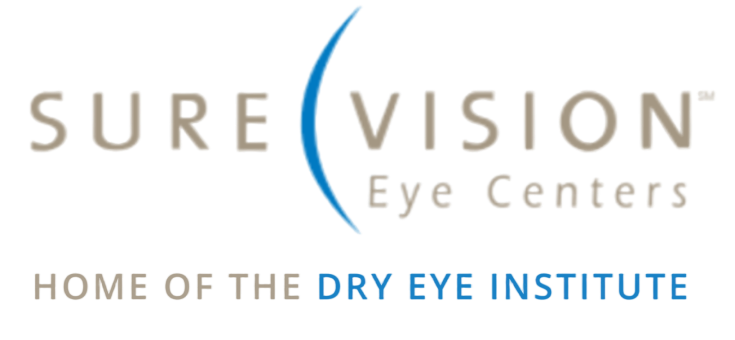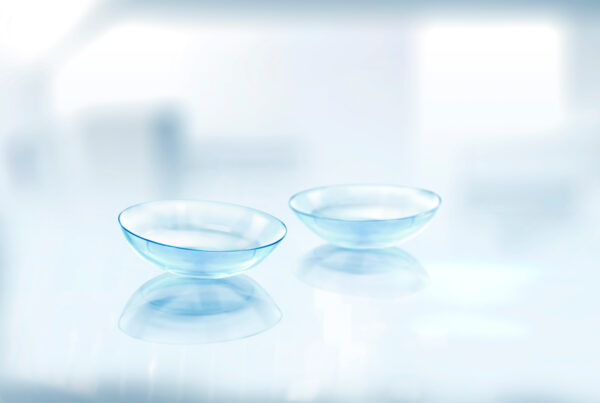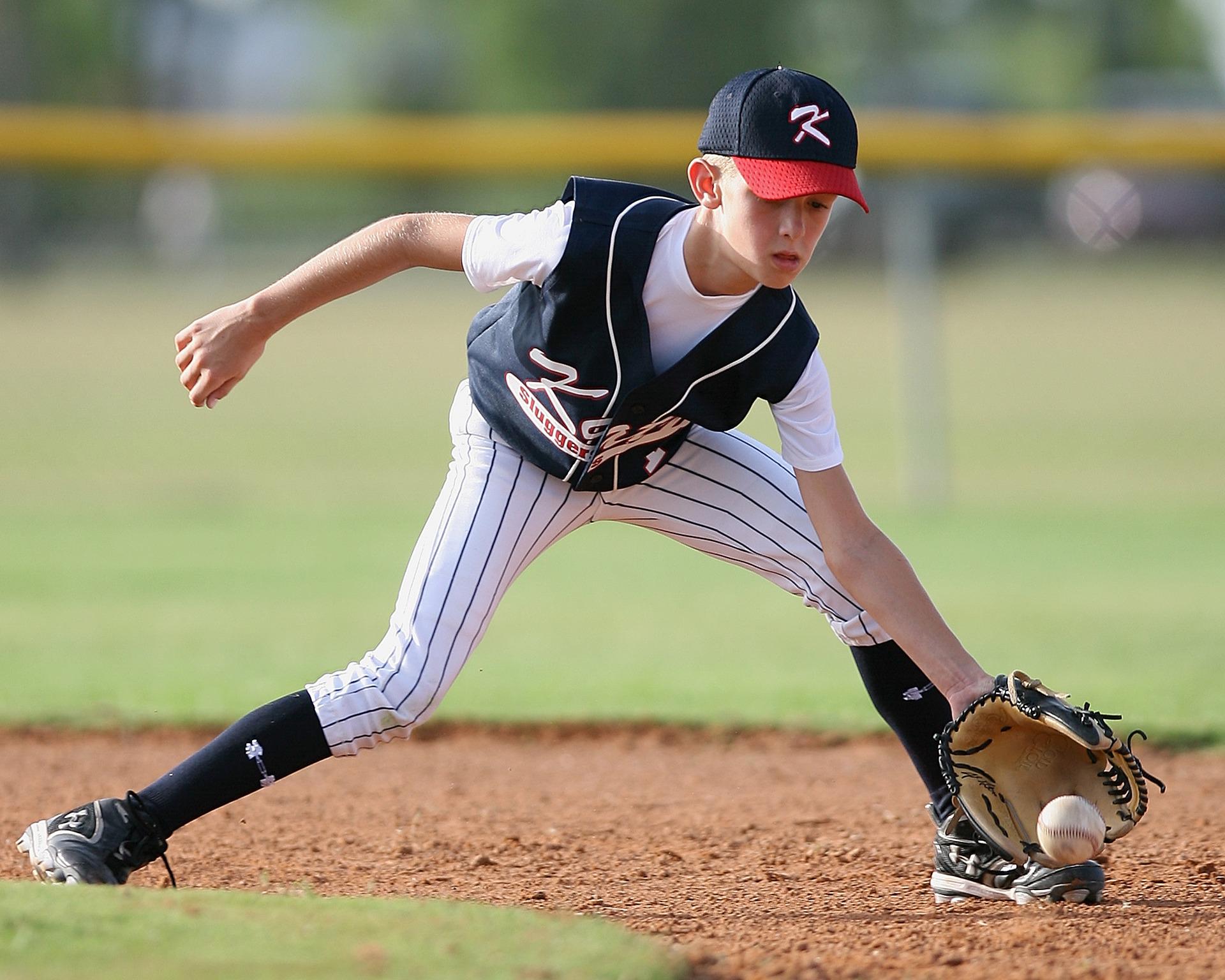
Article written by Dr. Matt McCoy, O.D.
With baseball season in full swing, from local little leagues, to the St. Louis Cardinals battling for first place, at SureVision Eye Centers we thought it would be a great time to discuss the visual aspects of baseball. If you listen to an interview with Albert Pujols or Paul Goldschmidt when they’re on a hot streak, one of the first things they often say is “I’m seeing the ball really well right now.” This can’t just happen by accident! From field design, to practice, to glasses and contact lenses, everything must come together perfectly for an athlete to see the ball to have a chance at success, at any level.
Any discussion about vision performance in sports needs to start with safety. Particularly in little leagues, athletes should be wearing eye protection, which is most often some form of “rec specs.” These glasses have a shatter resistant frame, and a headband to help the glasses stay in place during the action. The lenses should also be made of a shatter-resistant material, known as polycarbonate, so that an impact from a baseball or softball doesn’t cause the lens to shatter and damage your eye. Rec specs can also be made with prescription lenses for athletes who need some help to see the ball clearly.
For athletes who wear glasses and/or contact lenses, a successful season usually requires a trip to the eye doctor to make sure their prescription is perfectly tuned to give them the best vision on the field. While glasses are the most common form of vision correction, they are imperfect for visually demanding tasks such as athletic performance. After you receive your prescription from your eye doctor and go to order your glasses, the optician measures how far apart your pupils are, and how high your eyes sit in your glasses frame. This allows the center of your prescription lens, where the sharpest vision is, to be perfectly placed in front of your eye. When you look out of the side of your lens, the prescription is slightly different, resulting in a small amount of blurred vision. This can be the difference between a hit and a strikeout on the field, because the batter must turn his head and eyes quickly to track the pitch as it comes toward the plate.
The issues with glasses are part of the reason why most athletes prefer contact lenses for athletic competitions; because the contact lens sits on your eye and moves when you move your eye, the prescription is always perfectly centered and eliminates the shortcomings of glasses. This effect is even more important if you have a stronger prescription, or have an astigmatism. Patients with more difficult prescriptions often benefit from more personalized, specialty contact lenses than common soft lenses; these specialized lenses are one of many services we offer at SureVision.
Baseball players are famous for searching out every advantage they can find to improve their performance, and specialized contact lenses are no exception. One of the most famous hitters of all-time, Mark McGwire, was well-known for wearing red-tinted contact lenses to improve his eyesight in the batter’s box. While some of the benefit of these red lenses was psychological for Mark himself (or for intimidating the pitcher!), there is some science behind them as well. Red lenses filter out green light, and allow red light to pass into the eye. This has major implications on the baseball field, because the seams on the baseball are red, while the background behind the pitcher, known as the “batter’s eye,” is green. These contact lenses cause the seams of the baseball to stand out more against the green background behind the pitcher. If you’re interested in being evaluated for these contact lenses, we are proud to offer them at SureVision Eye Centers.
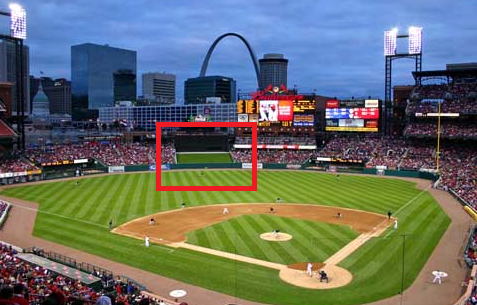
The grassy area without seats beyond the center field fence is known as the “batter’s eye.” It provided a non-distracting background for the hitter.
Along with having a batter’s eye behind the pitcher, the direction most baseball fields are facing is selected with the hitter’s vision in mind. Before large stadium lights were common, most baseball games were played in the afternoon. Baseball fields are usually oriented so that the batter is facing east. This orientation puts the afternoon sun behind the hitter so it is not shining in their eyes during the game. If you look at Busch Stadium on a map or as you drive along Highway 64, you’ll notice that the field was built with this consideration in mind. Have you ever heard someone refer to a left-handed person as a southpaw? This term actually originates from the design of most baseball fields! The direction baseball fields face results in a left-handed pitchers arm being on the south side (closer to first base) hence the term “southpaw.”
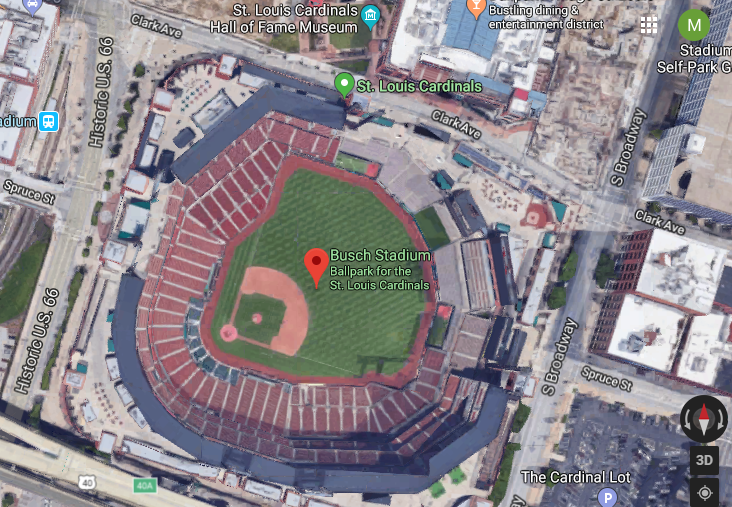
Busch Stadium: you can see that the batter is facing east, and away from the glare of the sun.
A consequence of this field direction is that fielders often have to track fly balls while looking towards the sun, which makes sunglasses very important for the fielding team. Most baseball players prefer polarized sunglasses, which have a filter in the lens that cuts down glare in addition to the tinted lenses blocking some of the sun’s light.
If you, your son, or your daughter are playing baseball or softball this summer, make an appointment with your SureVision Eye Centers eye doctors to see how we can help you perform your best on the field this summer.
